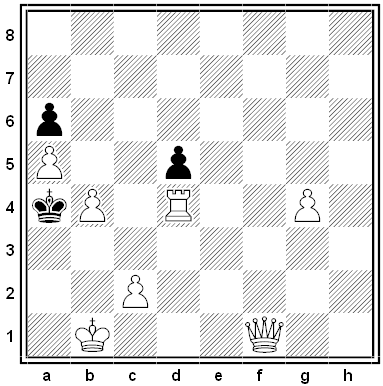Short Work
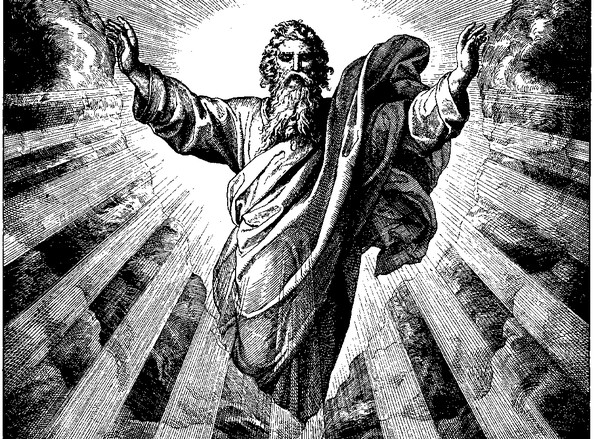
Then God said, Let there be light! And the light came. And God saw the light, and it pleased him, and he gave it the name of Day. And when the day was gone, and the dark came back to stay for a while, he gave the dark spell the name of Night. And God did these things on the first day.
— Josephine Pollard, History of the Old Testament in Words of One Syllable, 1888
04/20/2018 UPDATE: Much later, in 1994, MIT logician George Boolos summarized Gödel’s second incompleteness theorem in words of one syllable. (Thanks, Ethan.)
Romance at Short Notice
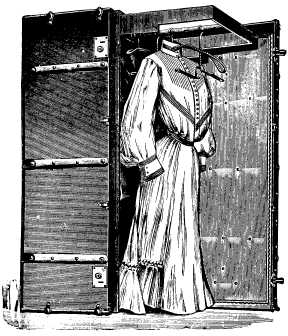
“According to the legend whispered by the retainers and villagers, no sooner did the clock strike twelve than a headless apparition was seen to move slowly across the moonlit hall.”
In 1911 English humorists Edward Verrall Lucas and George Morrow took the illustrations from a department store catalog and arranged them into “a deeply-moving human drama.”
Stewart C. Russell has put the whole thing online (PDF).
Homage
French composer Charles Koechlin rarely watched films until he saw The Blue Angel in 1933 and became captivated by “the formidable realm of the cinema.” He set to work and in a few weeks produced a Seven Stars Symphony, with a movement dedicated to each of seven actors of the day: Douglas Fairbanks, Lilian Harvey, Greta Garbo, Clara Bow, Marlene Dietrich, Emil Jannings, and Charlie Chaplin.
Interestingly, Robert Orledge writes in his biography of the composer, “The fifth, sixth and seventh movements, depicting Marlene Dietrich, Emil Jannings and Charlie Chaplin, are based on a cipher system of Koechlin’s own devising, in which the themes spell out the stars’ names, and in the case of the Emil Jannings movement virtually tell a film story in music.” I’ll try to find out more about that.
Podcast Episode 196: The Long Way Home

When Japan attacked Pearl Harbor, the crew of an American seaplane were caught off guard near New Zealand. Unable to return across the Pacific, they were forced to fly home “the long way” — all the way around the world. In this week’s episode of the Futility Closet podcast we’ll follow the adventures of the Pacific Clipper on its 30,000-mile journey through a world engulfed in war.
We’ll also delve into the drug industry and puzzle over a curious case of skin lesions.
Cold Facts
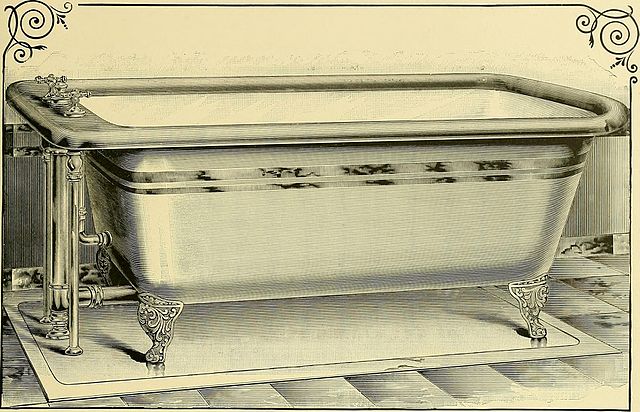
Victorian and Edwardian boys could send confidential questions to the Boy’s Own Paper and look for responses in the “Answers to Correspondents” column:
- “We are not sure of the colour of the South-Eastern Railway Carriages. The paint is rarely visible owing to the thick covering of dirt by which it is concealed.” (July 28, 1888)
- “Your insect was smashed in the post, but we have identified the fragments as those of Cetonia aurata, the common rose-beetle. Next time you send us a specimen, put it in a box.”
- “You cannot safely treat rupture yourself.” (July 1888)
- “It is extremely unlikely that Victor Hugo would ever answer any of your letters, even if we forwarded them. He has been dead quite some years.”
One of the editors, Scottish physician Gordon Stables, seemed to have a particular favorite remedy for health questions:
- “Rise not later than 7 and cold tub immediately. In very cold weather massage yourself all over before turning out, and then with the rough towel after the cold tub. Breakfast at 8, but only after ten minutes in the open air.”
- “Swimming in winter (Mac.). — Few can stand it, but judge for yourself if you can get a good reaction. Dr. Gordon Stables tells us that he joined his swimming club in December when a student. Keeps it up all the year round. Has swum for his life with his heavy clothes on in the Arctic regions. Took no hurt. Others might.” (January 1905)
- (To a girl who “wanted to get strong like the boys”:) “You have tried the really cold tub and the B.O.P. dumb-bell exercises every morning before breakfast, my dear?”
When one boy said he longed for a fine pair of whiskers, he was told that “a really cold tub” was his only hope. A New Zealand reader who asked for something to help his nerves was advised to “take plenty of exercise in the open air and a cold tub every morning before breakfast.”
What if there was no tub in the house? “Douche yourself regularly 365 days a year in the mornings on rising, and 366 in any Leap Year, with 30 sponge loads of the coldest water obtainable. We presume there is somewhere around where you can do this with discretion.” (Footnote: “The water must be really cold.”)
To a boy in Northern Ontario: “On no account should you ever cut a circular hole in the winter ice to get a cold tub. You would certainly freeze to death very quickly but it is also probable you might well provide a tasty meal for some hungry seal lurking below. In your case, wait for the spring thaws.”
Stables didn’t mince words. In 1905 he wrote, “The children of the wealthy and well-to-do in cities are apt to be spoiled by pampering and coddling and over-feeding. Cargoes of such little fat boys would sell well in some parts of new Guinea, but in this country they do not assist in the very least to keep the crown on the King’s head.” To a boy inquiring about “bad habits” in 1902, he wrote, “Coffins are cheap and boys like you are not of much use in the world. We do not answer by post.” Admonished for this, he published a modified reply in the Boy’s Own Annual for that year: “If you go on as you are, there is nothing before you but an early and dishonoured grave. Pray God to forgive and help you to resist temptation.”
(Jack Cox, Take a Cold Tub, Sir!, 1982.)
Something Different
https://www.youtube.com/watch?v=L48oOAA8FoY
Between 1769 and 1771, Austrian composer Johann Georg Albrechtsberger wrote at least seven concerti for Jew’s harp and strings.
He went on to teach Beethoven.
Worldly Wise

Proverbs from around the world:
- If two people tell you you are blind, shut one eye. (Georgia)
- Those who have free seats at a play hiss first. (China)
- It is in sugar that you see the dead ant. (Malaysia)
- Seven days is the length of a guest’s life. (Myanmar)
- Silence is a fence round wisdom. (Germany)
- Good things sell themselves; bad things have to be advertised. (Ethiopia)
- Where there is most mind there is least money. (Latin)
- Better a free meal of acorns than a honey feast on trust. (Wales)
- Only an owl knows the worth of an owl. (India)
- Good luck is the guardian of the stupid. (Sweden)
- At birth we cry — at death we see why. (Bulgaria)
- Errands are small on a spring day. (Iceland)
- The nail suffers as much as the hole. (Netherlands)
- The higher the castle the nearer to the lightning. (Russia)
- There never was a five-pound note but there was a ten-pound road for it. (Scotland)
- A contented mind is a continual feast. (England)
(From David Crystal, As They Say in Zanzibar, 2006.)
For What It’s Worth
In 2015 Keele University historian Paul Booth found evidence of a man named “Roger Fuckbythenavele” in the Chester county court plea rolls of 1310:
County Court of Chester, held on Tuesday after the feast of St Nicholas, 4 Edw. II, before Payn Tibotot, justiciar of Chester (8th December 1310)
A man called ‘Roger Fuckbythenavele’ was exacted for the first time [the process preliminary to outlawry].
TNA CHES 29/23 m 10d
Booth believes that’s the earliest known reference to fuck as a swear word. “This surname is presumably a nickname. I suggest it could either mean an actual attempt at copulation by an inexperienced youth, later reported by a rejected girlfriend, or an equivalent of the word ‘dimwit’ i.e. a man who might think that that was the correct way to go about it.”
Humiliatingly, Roger is mentioned seven times by that name in the rolls in 1310 and 1311. The “serjeants of the peace” had been ordered to bring him before the court, but they’d failed to find him, and consequently he was outlawed. Apparently a court clerk gave him the nickname.
(Paul Booth, “An Early Fourteenth-Century Use of the F-word in Cheshire, 1310–11,” Transactions of the Historic Society of Lancashire and Cheshire 164 [2015], 99–102.)
In a Word
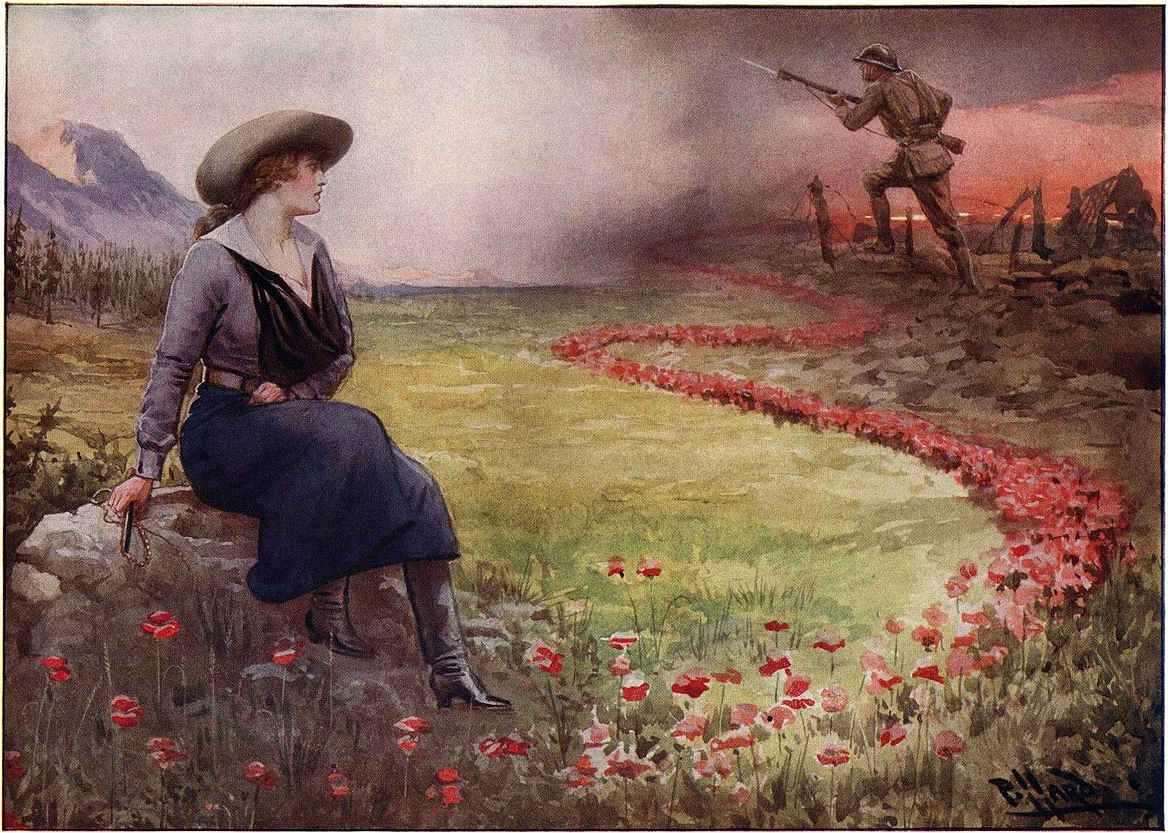
diremption
n. a forcible separation; a tearing asunder
phronesis
n. practical judgment; the faculty of conducting oneself wisely
obsecrate
v. to entreat (a person) earnestly
rescribe
v. to write back; to write in reply
From Betty’s Weekly, Feb. 19, 1916:
Dear Betty — My boy has been in the trenches for six months, and expects to get furlough any moment. What I want to ask is that, if you were me, would you meet him at the station, or would you wait for him at home?
You ask me a difficult question, little girl, and I find it hard to advise you. Were I you I’d want with all my heart and soul to be the first woman my boy would see when he arrived. And yet, dear, the meeting him after all he’s been through would mean so much to me and to him, too, that I don’t think I could bear to see him in public. Really and truly, were I you, I’d wait for him alone somewhere — at home, if possible. Somehow, such a meeting is too sacred to be witnessed by anybody. But be sure you go to see him off when he leaves for the Front again, and be as brave as you can, dear.

